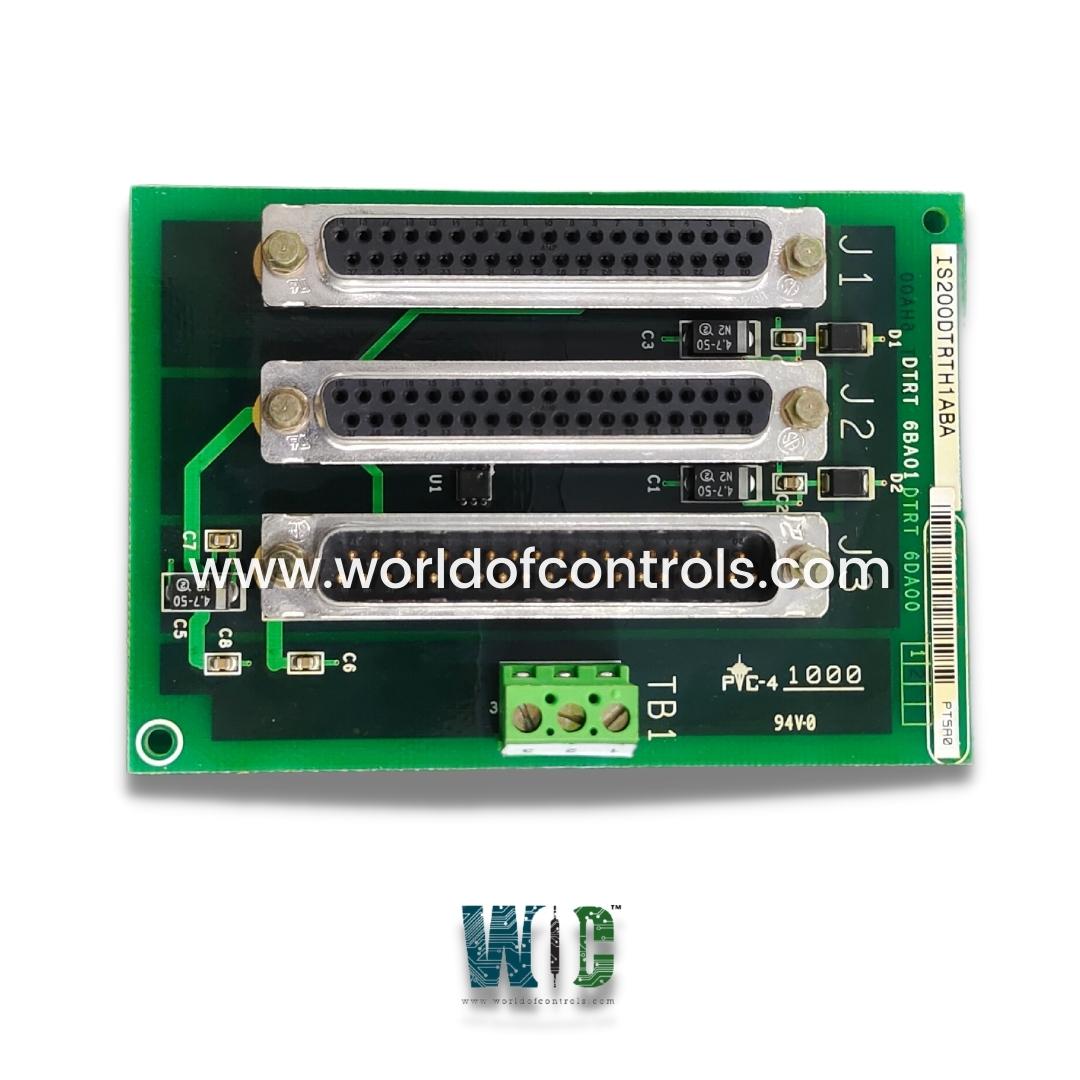SPECIFICATIONS
Part No.: IS200DTRTH1A
Manufacturer: General Electric
Country of Manufacture: United States of America (USA)
Trip interlock isolation: Optical isolation to 1500 V
Trip interlock filter: Hardware filter, 4 ms
Size: 17.8 cm wide x 33.02 cm, high
Technology: Surface-mount
Product Type: Primary Trip Relay Interface Board
Availability: In Stock
Series: Mark VI
Functional Description
IS200DTRTH1A is a Primary Trip Relay Interface Board developed by GE. It is a part of Mark VI control system. The DTRT board serves as a crucial interface between the I/O controller and the DRLY board, facilitating trip functions within the control system. The board is designed for DIN-rail mounting, offering convenient installation within the control cabinet or enclosure. Its compact size and versatile configuration options make it suitable for various system setups.
Features
- Interface between I/O Controller and DRLY: The primary function of the board is to establish communication and coordination between the I/O controller and the DRLY board. It enables trip functions initiated by the I/O controller to interface with the DRLY board, which controls relay operations.
- Trip Function Expansion: By utilizing the board, the system gains the capability to accommodate three trip functions from the I/O controller, which are then directed to the DRLY board. This expansion allows for enhanced control and flexibility in managing trip-related operations within the system.
- Controller Compatibility: Compatible with multiple controllers, enabling seamless integration with different system configurations. It can accommodate connections from up to two controllers simultaneously, enabling a total of six relay controls on the DRLY board.
- Reliability and Redundancy: Incorporating the board into the system enhances reliability and redundancy by distributing trip functions across multiple boards and controllers. This distributed architecture minimizes the risk of single points of failure and ensures continuous operation even in the event of component failures.
- Simplified Wiring and Installation: With the board in place, wiring and installation become more streamlined and efficient. It provides clear pathways for trip signals between the I/O controller and the DRLY, simplifying the overall setup process and reducing potential points of error.
- Scalability and Expandability: The modular design of the DTRT board allows for scalability and expandability, making it suitable for systems of varying sizes and complexities. As system requirements evolve, additional boards can be seamlessly integrated to accommodate growing demands.
Input and Output
- Inputs: The board features two DC-37 pin connectors designated as J4, intended for receiving cables from VTUR (presumably Trip Unit Relay). Each connector accommodates connections for three trip relays, resulting in a total of six trip relays being supported. These inputs serve as the interface between the trip functions initiated by the VTUR and the board, facilitating seamless communication and control over trip relay operations.
- Outputs: The board provides a single DC-37 pin connector designated for cable connection to the board. This connector serves as the output interface through which the trip relay commands from the board are transmitted. With a total of six trip relays supported by the DRLY board, the single output connector from the DTRT board ensures efficient transmission of trip relay signals, enabling coordinated operation and control over trip-related functions within the system. It acts as a pivotal component in the trip transition process, facilitating the seamless transfer of trip functions from the VTUR to the board.
- By consolidating trip relay inputs from the VTUR and directing them to the board, the DTRT board enhances the efficiency and effectiveness of trip-related operations within the control system.
- Its modular design and flexible connectivity options make it well-suited for integration into various system configurations, providing scalability and adaptability to meet evolving operational requirements.
The WOC team is always available to help you with your Mark VI requirements. For more information, please contact WOC.
Frequently Asked Questions
What is IS200DTRTH1A?
It is a Primary Trip Relay Interface Board developed by GE under the Mark VI series.
What diagnostic tests are performed on the board?
The board undergoes diagnostic tests to ensure the proper functioning of its components. These tests include interrogating each terminal board connector to verify its ID device, which contains essential information such as the serial number, board type, revision number, and connector location. Any discrepancy in this information results in the creation of a hardware incompatibility fault.
How does the board handle connector identification?
Each terminal board connector on the board is equipped with its own ID device, which stores crucial information about the board. When the I/O processor interrogates these ID devices, it reads the coded information to verify the compatibility and proper configuration of the connectors. Any mismatch detected during this process triggers a hardware incompatibility fault.
What is the purpose of transferring ID information from DRLY to VTUR through J1?
The board facilitates the transfer of ID information from the board to the VTUR (Trip Unit Relay) through connector J1. This exchange of information ensures synchronization and compatibility between the different components of the control system, enabling seamless communication and coordination of trip relay operations.
